Your Closing System Deserves an Upgrade
Have you ever wondered why there are over 30+ different planter closing wheels that attach to the same frame from the 70’s?
Rethink your existing closing system
In many ways, farming is much different now than it was in the 1970’s, over 40 years ago! There’s autosteer, treated seeds, yields have nearly doubled in some regions and we use our phones for farming apps. But when looking through old product brochures we noticed that quite a few things haven’t changed–including the closing systems.
Toss out the old wheels, toss out the frustration, and take a look at a redesigned closing system built for today’s planters and beyond.
FAQ
How is FurrowForce different from other closing wheels?
Rather than trying to close from the soil surface, FurrowForce has first stage notched wheels that are aggressively angled to fracture the sidewall of the furrow, moving soil horizontally. The depth of the first stage notched wheels is determined by the second stage stitch wheels. The two stages are rigidly linked to accomplish this depth control. The second stage sets depth but also carries weight. It firms the soil above the seed with adjustable airbag force. FurrowForce can be optimized for the best closing performance because depth, the width of the first stage notched wheels, and pressure are adjusted either manually or automatically.
I have a lot of rocks in my soil. Does FurrowForce have issues with rocks?
No! There is a rock guard that can be added to kick rocks aside.
Does FurrowForce work well in my soil type/conditions?
Yes! Tune the depth of the first stage, width of the first stage, and pressure to match your conditions. When set correctly for your conditions, FurrowForce works great.
Do you have to have all the electronic stuff to go with it or can you just buy the closing system? I like my planters to be simple and mechanical.
FurrowForce can be run with manual adjustment without the need for a 20|20 monitor. With manual adjustment, digging behind your planter is what will inform your adjustments.
What is the advantage of running FurrowForce as an automated closing system?
If you don’t want to have to continually guess at what pressure to set your closing, then FurrowForce along with a Gen3 20|20 monitor in your cab is the solution. Simply add load sensors and control modules and you have yourself an automated closing system.
In the cab, set the amount of firming force you want the stitch wheels to carry. When the load cells sense that there is more or less weight on the stitch wheels than you desired, the control module adjusts the pressure applied to that row instantly, to maintain your desired pressure. And you can be confident, because of the way that the two stages are linked together, that when you are carrying weight on the second stage stitch wheels, the first stage wheels are cutting into the depth you set them at.
How do I ensure FurrowForce is running correctly?
FurrowForce isn’t an install it and never check it again product. You will need to spend time finding the right depth and wheel spacing for your conditions. Once these things are set correctly, though, digging behind the planter will be totally different than you have seen before.
Why not just make a good wheel or attachment to go on the closing frame that has been around on planters for 40+ years?
In order to provide farmers with a system that can adapt to all environments and have ultimate control, new frames are needed. Any wheel that goes on the existing frame is trying to close from the soil surface down, and it took a completely new design to be able to close from the seed up.
I’ve heard people say “I can’t find the furrow.” Doesn’t that make digging behind the planter harder?
It’s true. We hear many users of FurrowForce say “I can’t find the furrow.” This isn’t surprising since FurrowForce adapts to your planting conditions to remove air pockets and firm soil to keep moisture and destroys the evidence of the planter having placed the seed in the ground. Digging behind the planter to check your seed will be a totally different experience, but in a good way! When there is no evidence of the furrow, this means that your plant’s roots will be able to grow freely through the soil profile without yield-robbing soil density changes to navigate through.
What issues do people have with FurrowForce? Has Precision Planting made any improvements?
FurrowForce is not an "install it and never look back again" product. Closing is best achieved when the notched wheel width, depth, and pressure are all adjusted correctly for the conditions. For instance, with the wheels set very wide in tacky conditions, total closure of the furrow would be improved by narrowing up the wheels. Also, the stagger of the first stage wheels and the setting of the rock guard is important to prevent catching rocks.
Rethink your existing closing system
In many ways, farming is much different now than it was in the 1970’s, over 40 years ago! There’s autosteer, treated seeds, yields have nearly doubled in some regions and we use our phones for farming apps. But when looking through old product brochures we noticed that quite a few things haven’t changed–including the closing systems.
Toss out the old wheels, toss out the frustration, and take a look at a redesigned closing system built for today’s planters and beyond.
FAQ
How is FurrowForce different from other closing wheels?
Rather than trying to close from the soil surface, FurrowForce has first stage notched wheels that are aggressively angled to fracture the sidewall of the furrow, moving soil horizontally. The depth of the first stage notched wheels is determined by the second stage stitch wheels. The two stages are rigidly linked to accomplish this depth control. The second stage sets depth but also carries weight. It firms the soil above the seed with adjustable airbag force. FurrowForce can be optimized for the best closing performance because depth, the width of the first stage notched wheels, and pressure are adjusted either manually or automatically.
I have a lot of rocks in my soil. Does FurrowForce have issues with rocks?
No! There is a rock guard that can be added to kick rocks aside.
Does FurrowForce work well in my soil type/conditions?
Yes! Tune the depth of the first stage, width of the first stage, and pressure to match your conditions. When set correctly for your conditions, FurrowForce works great.
Do you have to have all the electronic stuff to go with it or can you just buy the closing system? I like my planters to be simple and mechanical.
FurrowForce can be run with manual adjustment without the need for a 20|20 monitor. With manual adjustment, digging behind your planter is what will inform your adjustments.
What is the advantage of running FurrowForce as an automated closing system?
If you don’t want to have to continually guess at what pressure to set your closing, then FurrowForce along with a Gen3 20|20 monitor in your cab is the solution. Simply add load sensors and control modules and you have yourself an automated closing system.
In the cab, set the amount of firming force you want the stitch wheels to carry. When the load cells sense that there is more or less weight on the stitch wheels than you desired, the control module adjusts the pressure applied to that row instantly, to maintain your desired pressure. And you can be confident, because of the way that the two stages are linked together, that when you are carrying weight on the second stage stitch wheels, the first stage wheels are cutting into the depth you set them at.
How do I ensure FurrowForce is running correctly?
FurrowForce isn’t an install it and never check it again product. You will need to spend time finding the right depth and wheel spacing for your conditions. Once these things are set correctly, though, digging behind the planter will be totally different than you have seen before.
Why not just make a good wheel or attachment to go on the closing frame that has been around on planters for 40+ years?
In order to provide farmers with a system that can adapt to all environments and have ultimate control, new frames are needed. Any wheel that goes on the existing frame is trying to close from the soil surface down, and it took a completely new design to be able to close from the seed up.
I’ve heard people say “I can’t find the furrow.” Doesn’t that make digging behind the planter harder?
It’s true. We hear many users of FurrowForce say “I can’t find the furrow.” This isn’t surprising since FurrowForce adapts to your planting conditions to remove air pockets and firm soil to keep moisture and destroys the evidence of the planter having placed the seed in the ground. Digging behind the planter to check your seed will be a totally different experience, but in a good way! When there is no evidence of the furrow, this means that your plant’s roots will be able to grow freely through the soil profile without yield-robbing soil density changes to navigate through.
What issues do people have with FurrowForce? Has Precision Planting made any improvements?
FurrowForce is not an "install it and never look back again" product. Closing is best achieved when the notched wheel width, depth, and pressure are all adjusted correctly for the conditions. For instance, with the wheels set very wide in tacky conditions, total closure of the furrow would be improved by narrowing up the wheels. Also, the stagger of the first stage wheels and the setting of the rock guard is important to prevent catching rocks.





